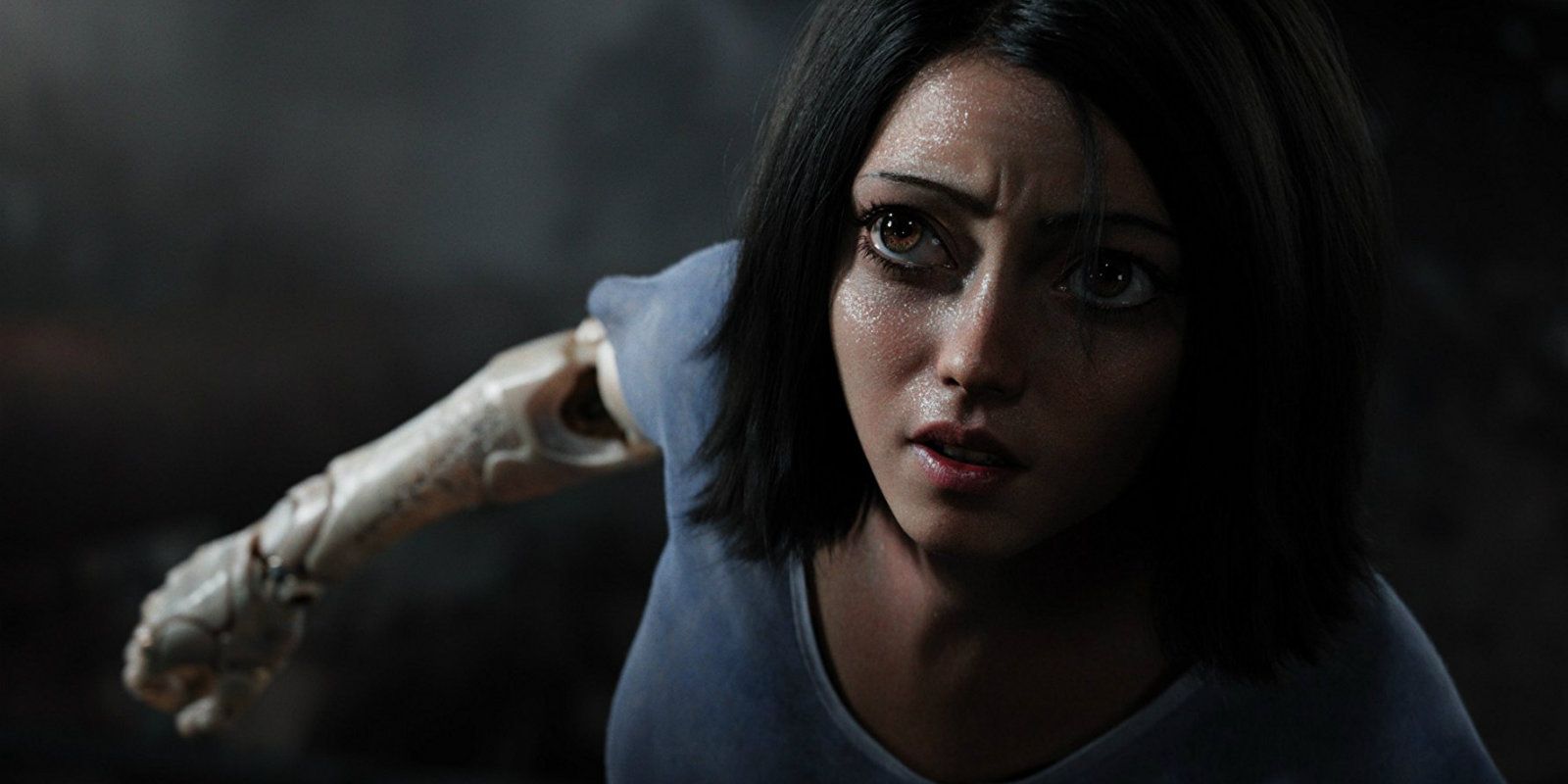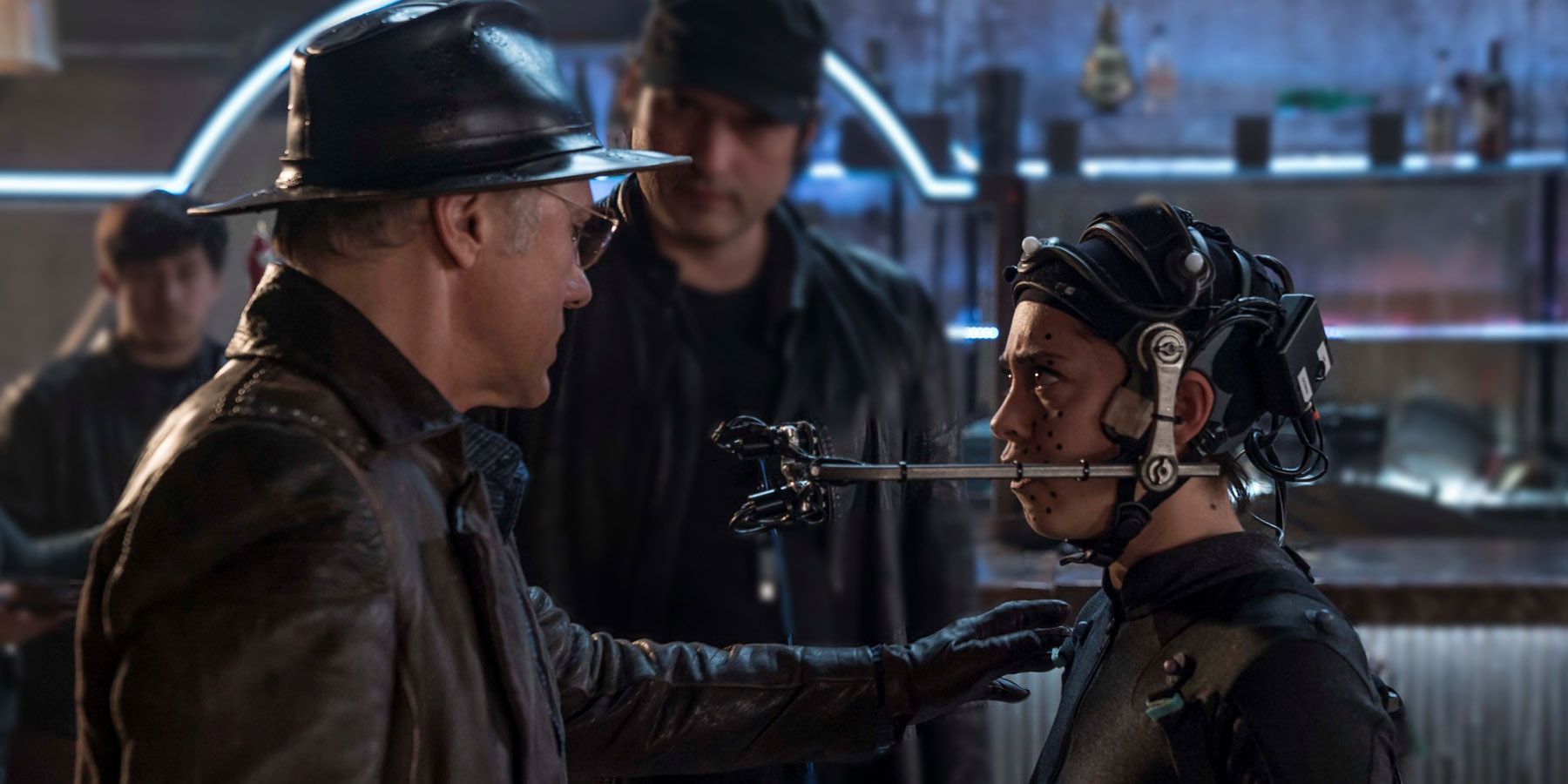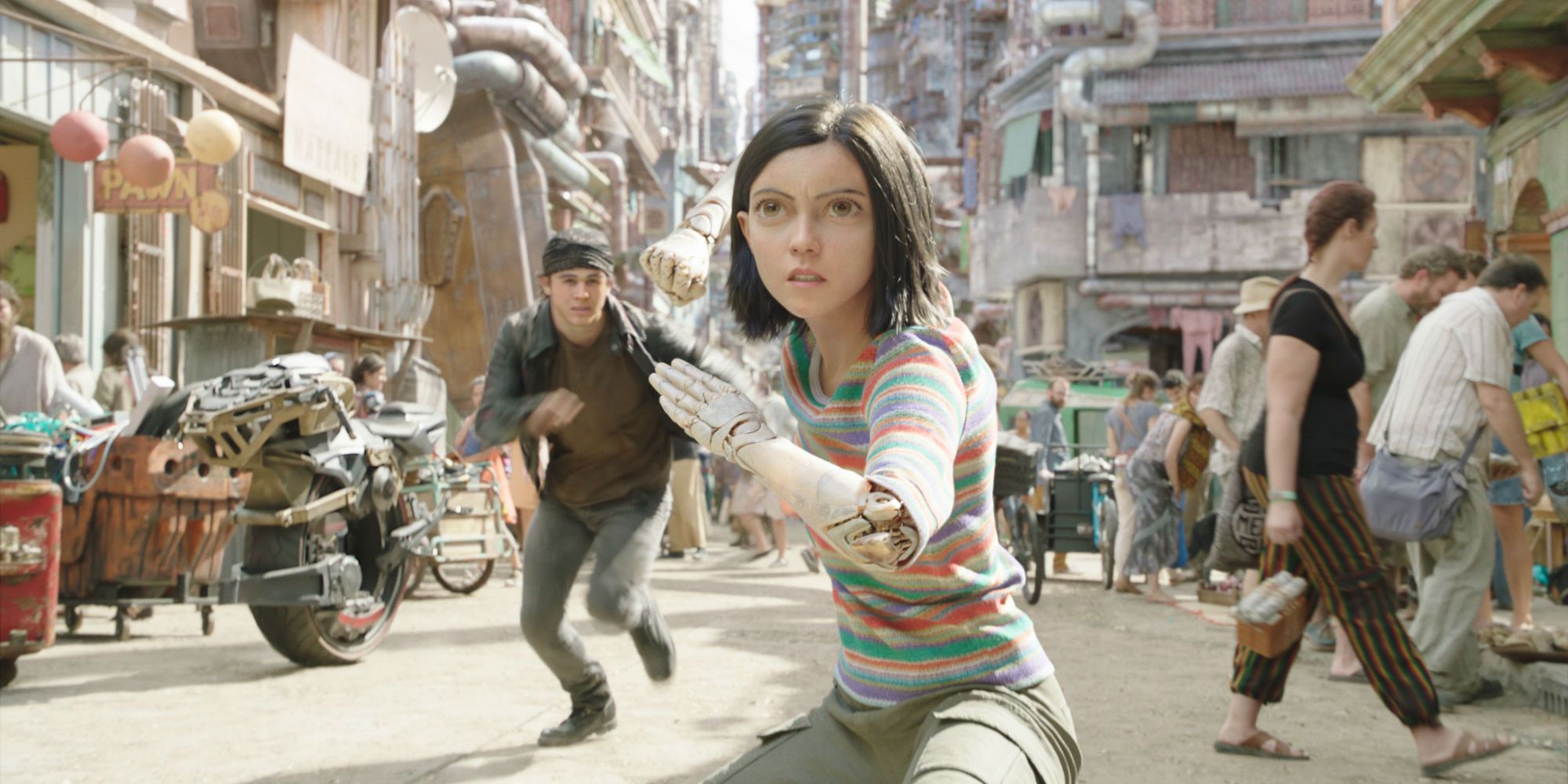
With Alita: Battle Angel, Lightstorm Entertainment proved that amazing effects don’t change a character’s humanity or a story’s empathy. The VFX team behind Avatar made the world fall in love with Rosa Salazar’s performance as a wide-eyed cyborg to the point that audiences simultaneously treated her as human while forgetting there was a human there at all.
Now that Alita has landed on the Oscars shortlist for visual effects, Screen Rant spoke to the artists who worked on the project about how they designed the characters, what they learned from Avatar, and when fans can expect a sequel.
I keep asking Rosa Salazar when we're getting the next Alita, and she says, "You gotta put it out there."
Richard Baneham: The Rosa portion of it is the single most important thing, and I'm glad that you find her and like her. Because that casting is the success or failure of the movie, right there and then. It's about getting Rosa's performance from Rosa onto the screen. That is, above all else, the thing we have to protect.
Mike Cozens: That character arc from innocent and childlike, and all these passionate reactions to the world that she kind of tumbles into at the beginning of the film to this evolved warrior woman by the end of the film. Rosa delivers that over the course of the production in singular moments time and time again, and our job over months of post-production is to hold on to that, harness it, and make sure that reads in the character of Alita.
Anime adaptations haven't been the most successful in the United States, but you did a great job of executing it. What is the secret to working on all these characters, like Ed Skrein's character for example?
Richard Baneham: Again, he's a fine actor. That is the single most important statement right there.

But the visuals in this movie are so stunning. When you get some of these characters, what's the most fun thing to start playing around with after you get the source material?
Richard Baneham: There was a moment where Zapan has an exposed trachea, with these hyper-extended tubes on the neck. We had proposed that you can shoot a hand right through and grab that trachea. That's the fun stuff. That's where they get me.
Mike Cozens: You're using the character design to up the action.
Richard Hollander: With Ed's character, Zapan, probably the biggest thing from production design was the face. The face was Ed's face, but then the innards have to drop in. It's not at the same level of the skin, which was an issue. The solution was that a prosthetic was placed on him that actually started to raise up the edge. So, there was a ridge there that these guys then can work with and give the impression that his face has been attached to this mechanism.
Richard Baneham: It's the cyborg's gid. You want skin on the outside of a mech.
Eric Saindon: For me, it's the negative spaces in all those characters like Ed. Being able to see through them and seeing that negative space through them helps to solidify the fact that that's not someone in a costume. This is a cyborg with that face attached.
Mike Cozens: Interestingly, that's in direct contradiction to what we're trying to do, but in a really good and artistic way. Our job is to bring the Rosa performance of the Alita model come to life and make you forget that she is real, from a facial performance standpoint. But from an emotional standpoint, it's to make her feel fully realized.
It's not just the negative spaces, but also the mechanical elements of the body which makes it feel prosthetic.
Eric Saindon: It's also the contrast of those two characters from the same movie that makes you believe a lot more.
Mike Cozens: It's a real world with Cyborgs.
When I was watching the movie, I almost forgot that's not how Rosa Salazar looks in real life. Unlike with The Lion King and Star Wars and Marvel, you had to create this world from scratch, but you had the anime and the manga to go off of we haven't. Talk to me about the challenges of building the actual world digitally in Alita.
Richard Baneham: We had the pressure of honoring that world.
Eric Saindon: Luckily, we had a good jumping off point. We had a lot of that world from the manga, like the design of Solom and the design of Iron City. A lot of that design came from there, and the melting pot of different cultures really adds to the whole variety of life that is Iron City.
Richard Hollander: And a little spin from Robert Rodriguez on top of that, and a great design that had been in development for a lot of years. One of the benefits of something like that, because it got a concept, and then it lay dormant for a while before getting a fresh life and learning from the original concept.
So, I'm a firm believer that every time you go to redo something, you're not going to necessarily kill it if you do it the right way. You're going to improve it.
Richard Baneham: You go all the way back to 2005, when we started the Avatar testing. I think ILM were doing the original test, but we weren't even sure whether we were going to make Battle Angel or Avatar.
We emerged as a testament to the fact that the property is as strong as it is and needed to be made. It's a very, very rich world that in a lot of ways we've only just tapped into. She's only come to a point in the story where she has realized her true self. Nothing has even happened.

I talked to Jon Landau maybe two years ago and he said that had it not been for Avatar, this probably wouldn't have gotten made.
Richard Baneham: Well, we realized at the end of Avatar that, in a lot of ways, we made the movie twice. We made it once here on the stages in LA, and then we remade it in WETA. Now, we actually have a completely integrated system where the WETA software is what we shoot in.
This project happening in between, during that evolution, was serendipitous. The tool set exists to allow us to do a very unique workflow, which was a cyclical and organic workflow rather than a linear process. We were able to take shots that I like all about CG so get some plates but we had ideas about how it would go sounds like we'd get together.
Mike Cozens: We'd get some capture in LA, some keyframe animation in New Zealand assembled in New Zealand, then sent back to LA for virtual camera.
Richard Baneham: And when we were doing virtual camera, we were able to do harken back to the manga and look for what is it specifically about the manga frames that worked. So, we literally were matching to see how we make it feel like the property.
Alita was a bridge between two worlds. She had to coexist with a live action.
Mike Cozens: And all this wild digital design, like these big mechs with quite different designs all had to be cohesive.
Let's be honest. There's going to be a sequel, right?
Richard Hollander: You are here in a very special place where they own this property. Go over there and help us.
Richard Baneham: The truth is that the fiscal side of things is a reality. This movie didn't really reach as big an audience here in the States as it should have, though it was very successful abroad. But what we can we can seek solace is that every single time we talked to somebody who saw the movie late, saw a screener or saw on an airplane, they go, "That was a much better movie than I thought. It's different than I thought." It's lovely to see.
I'm really hoping for this Oscar push, because Alita deserves it. It's so visually stunning and yet character-driven. It's fascinating how Rosa Salazar's performance transcends the effects; you can see the emotion in her digital eyes.
Richard Baneham: That was our goal. Our goal is to take Rosa's performance and ensure that it gets onscreen in the form of Alita. That we get everything she worked so hard to produce, and that we don't lose it along the way.
Richard Hollander: That's a lot of the reason why people stick to the movie. She's in there for an hour and a half, as a CG character. You forget, because Rosa's performances is right there. Everybody bought it, because you saw her.
Alita: Battle Angel is currently available to buy on Blu-ray, 4K Ultra HD, and DVD.
from ScreenRant - Feed https://ift.tt/2sduC9n





No comments: